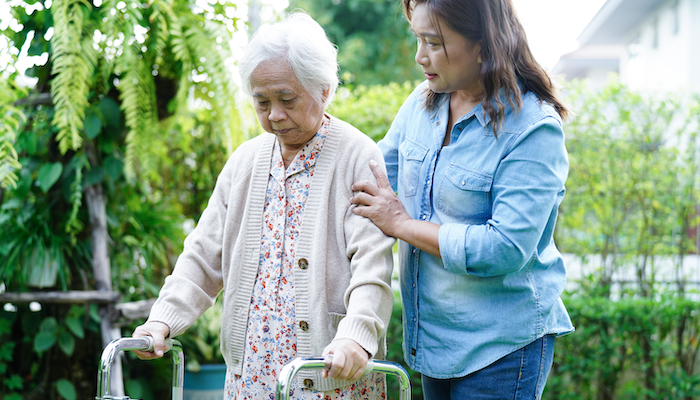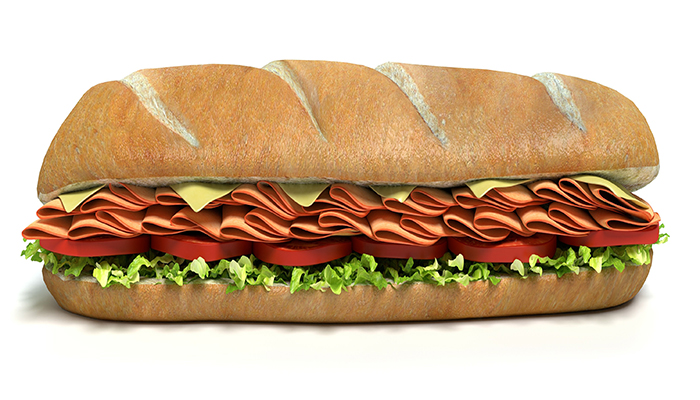Your Eldercare Compass
Helpful tips for family caregivers
July/August 2015
July, the month of independence! For a family caregiver, “independence” takes on several meanings. There are issues about helping your loved one stay as independent as possible. That may mean addressing frailty or encouraging use of a walker as a way to stay active and engaged. If you are part of the “Sandwich Generation” who is caring for a parent as well as for teens or young adult children, independence has an entirely different meaning. Whichever way you slice it, here are some articles to help you happily promote independence for yourself and for those around you…
Understanding frailty
 “Frailty” used to be a rather vague description, like “old age.” Currently, however, it is recognized as a cluster of conditions that deserves medical attention.
“Frailty” used to be a rather vague description, like “old age.” Currently, however, it is recognized as a cluster of conditions that deserves medical attention.
The following are signs of frailty:
- Complaints of fatigue
- Physical inactivity
- Slow gait (walking speed)
- Poor balance (frequent falls)
- Decreased strength (for instance, weak hand grip)
- Unintentional loss of 10 pounds, or 5% or more of body weight in the past six months
Between 5% – 17% of older adults can be considered “frail.” There is a continuum of frailty from “prefrail” to late stage. Frail individuals are more likely to become seriously ill from simple infections. They are more likely to be hospitalized and to become disabled. Not surprisingly, they are more likely to die sooner than their nonfrail peers.
Frailty seems to involve a combination of physical processes in the body that reduces our normal reserves and resilience to bounce back from illness or a fall. Chronic inflammation—the immune system on hyperdrive—is a factor. Also the common reduction of muscle mass as we age. People with multiple chronic conditions also seem to be at higher risk.
No one organ system is to blame. And there are no blood tests, x-rays, or other imaging tests to confirm frailty.
To determine the level of frailty (and how best to approach it), you will want to get a full geriatric assessment. This will involve identifying medical conditions and creating a list of medications. But it also requires a functional assessment (how well your loved one can complete daily living tasks). Fall risk, hearing, vision, mental health, and cognitive impairment testing are also included. An Aging Life Care Manager can assist you with these assessments.
Some aspects of frailty can be remedied. If your relative is in the “prefrail” or early-frail stage, they could benefit from strength training and balance exercises. Understanding frailty for those further down the continuum can help with decisions about how well a surgery or aggressive treatment is likely to be tolerated, or whether hospice is the most supportive option.
Return to topThe "Sandwich Generation"
 Elderly parents are living longer. Children are often dependent for more years than expected. Add to this the ongoing responsibilities to spouse/partner and jobs, and there is little wiggle room for the millions of family caregivers who find themselves squeezed in the middle as the “Sandwich Generation.”
Elderly parents are living longer. Children are often dependent for more years than expected. Add to this the ongoing responsibilities to spouse/partner and jobs, and there is little wiggle room for the millions of family caregivers who find themselves squeezed in the middle as the “Sandwich Generation.”
When you are pressed on both sides like this, it’s easy to feel guilty and lose sight of the joy in your life. To reduce guilt, support your resilience, and make sandwich caregiving more gratifying, look for easy ways to dedicate some quality time on a regular basis to each of your key relationships—including with yourself!
- Ensure parent care is not just a rote set of to-dos. Instead, take stock of what you enjoy about the person or situation. Is there a daily comic you could share for a laugh? Or memories to savor by scrapbooking together or labeling old photos and recalling past times?
- Enlist the help of children living at home or nearby. Maybe your teen or young adult child can cook meals, do shopping errands, or drive mom where she needs to go. As with parent care, also identify activities you and your child can enjoy together. Look for your child’s strengths and let them be the leader or teacher now and then.
- Keep your noncaregiving relationships alive. Don’t neglect your partner. Make regular dates for one-on-one fun time. Watch out for continual conversation about caregiving. This is just about the two of you. And don’t forget your friends. Caregiving may be a big part of your life, but it’s not all of who you are. Dedicate regular time—even just short texting—to stay in touch with your buddies. Caregiving isn’t going to last forever. You don’t want to lose them.
- Do something once a week to boost your professional self. Read an article related to your career. Make a call to a colleague for a quick networking session.
- Take some “being” time for yourself. It’s easy to get swept up in “doing” all the time. Give yourself at least 15 minutes a day for emotional or physical renewal.
When Dad resists a walker
 For many older adults, use of a walker carries great stigma. It’s a symbol of disability and often of isolation.
For many older adults, use of a walker carries great stigma. It’s a symbol of disability and often of isolation.
In actual fact, a walker can be the key to staying safely and actively engaged with favorite activities.
A walker is superior to a cane on many counts.
In particular
- it can bear up to 50% of a person’s weight. A cane can hold only 25% of one’s weight.
- it supports good posture. A walker keeps a person upright by reinforcing both sides of the body. A cane steadies only one side.
- it is designed for people with moderate to severe balance problems or those with generalized weakness and arthritis. A cane is best for only minor balance problems or injuries.
- it may include a basket or other device for carrying items.
- it may act as a chair when needed. Many walkers with wheels have a bench. Great for “standing” in line or when your loved one is suddenly tired or dizzy.
- it stays where you put it! Canes seem to have a mind of their own, scooting out of reach when you least expect it.
If you have had the “let’s get a walker” talk without success, make an appointment with the doctor to discuss balance issues. You might ask the doctor, “What’s your experience with patients who fall? How careful should we be?”
Also get the doctor’s input about the type of walker that is best for your loved one. The doctor may recommend that a physical therapist do a mobility assessment to determine the best way to stay safe and secure while walking.
If resistance persists, empathize with Dad’s frustration that his body has given out on him in this way. Remind him that with a walker, he can still get around on his own to do what he pleases. Even if it’s personally not a favorite, it’s often the wisest choice for maintaining independence.
Return to top
